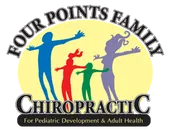HOW DOES ACUPUNCTURE WORK?
As an Acupuncturist in this country, I’m starting to see a lot less apprehension from new patients as they enter my clinic these days. Year after year, surveys continue to show dramatic increases in the numbers of patients confidently entering the waiting rooms of acupuncturists across the country.

Even the U.S. Navy, Air Force and Army doctors have begun using acupuncture to treat musculoskeletal problems, pain and stress in stateside hospitals and combat zones in Iraq and Afghanistan. Volunteer practitioners from Acupuncturists Without Borders are held communal ear-needling sessions to reduce stress among earthquake victims in Haiti and were in Colorado to support victims of this summer’s fires. Even major medical centers such as M.D. Anderson in Houston and the Mayo Hospital in Phoenix are using acupuncture to counteract the side effects of chemotherapy and give additional support to patients with difficult cases.
But despite all of that, and the fact that Acupuncture has been a mainstay of medical treatment in large parts of the world for 4,000 years, many lay-people are still skeptical. This skepticism come mostly from a fundamental misunderstanding of how acupuncture works- complicated by the foreign concepts of Qi and Yin/Yang that most sources use to describe acupuncture’s mechanism of action.
For the most part, though, the medical and scientific communities are no longer doubting the efficacy of the medicine. Modern technology and research methodology has proven that Acupuncture is not merely a placebo effect and currently, there are a number of modern medical theories that explain, scientifically, how it works.

Acupuncture from the point of view of Western medical science
“In the past it was easy for doctors and scientists to dismiss acupuncture as ‘highly implausible’ when its workings were only couched in talk of chi and meridians. But it becomes very plausible when explained in terms of neurophysiology,” explains Dr Adrian White, who is the editor in chief of the scientific journal Acupuncture in Medicine and a leading medically trained acupuncturist.
According to current understanding, the primary system affected by acupuncture is the nervous system. What you have to realize about the nervous system, is that it doesn’t justtransmits signals along the nerves, it also emits a variety of biochemicals that influence and connect to virtually every other system in the body- effecting blood flow, hormones, the immune system and more. In other words, because of it’s major connection to the nervous system, Acupuncture can be used to activate certain responsive parts of the nervous system, setting off a biochemical cascade which stimulates healing.

Brain imaging studies show that Acupuncture calms areas of the brain that register pain and activates those involved in rest and recuperation. Doppler ultrasound shows that acupuncture treatments increase local blood flow and thermal imaging shows that it reduces local inflammation.
Acupuncture is well known to stimulate the release of endorphins in the central nervous system. Endorphins are your body’s natural opioids- “feel good” chemicals which have an analgesic affect on pain and help to calm the Sympathetic Nervous System, helping your body switch from that insidious, high-stress “fight-or-flight” mode, to “rest-and-heal” mode. This is especially helpful when treating cases involving pain, stress or drug addictions.
According to the Wall Street Journal, “Scientists are also finding parallels between the ancient concepts and modern anatomy. Many of the main 365 acupuncture points correspond to nerve bundles or muscle trigger points. Several meridians track major arteries and nerves. If people have a heart attack, the pain will radiate up across the chest and down the left arm. That’s where the heart meridian goes. Gallbladder pain will radiate to the right upper shoulder, just where the gallbladder meridian goes.”
The National Institute of Health (NIH) and the World Health Organization (WHO) have recognized Acupuncture and TCM to be effective in treating over 56 different conditions with a far greater therapeutic reach than just treating for pain relief.
As a country, our heath is getting worse, not better. Increasingly complex diseases and disorders are being brought on by a modern-day lifestyle that includes the over-consumption of grains and sugar, high stress levels, a sedentary lifestyle, and rampant malnutrition the result of nutritionally-bankrupt food.

Increasingly, the public is becoming frustrated with ineffective Western treatment options, the pervasive overuse of drug therapy, and a basic focus on the mere relief of symptoms – are looking to the more natural approach that Chinese medicine offers. Many people are finding that their medical issues are being successfully addressed by Traditional Chinese Medicine’s whole-person, root-cause focused approach to healthcare, which emphasizes the re-balancing of diet and lifestyle, even before a single needle is inserted.
Chinese medicine is gradually making its way into the mainstream consciousness. We have become a first choice rather than a last resort these days, as results from study after study surface within the media, confirming acupuncture as a scientifically viable and clinically effective option for not only pain, but many other health issues.
